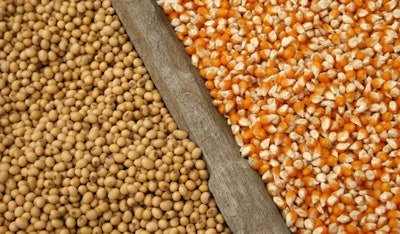
USDA sees improvement in Ukraine, but Purdue economists not banking on increased soy and corn supplies
Reports that Ukraine has managed to plan larger corn and soybean crops than anticipated have spurred some optimism about potential supplies this week, but Purdue economists aren’t betting the whole farm on the latest numbers from the U.S. Department of Agriculture (USDA).
USDA’s latest World Markets and Trade reports increased the size of the overall corn harvest expected this fall, based primarily on the success reported this last month in Ukraine counterbalanced by a slight reduction in demand. Estimated soybean production also posted improvements this month, but USDA continues to project near-record corn prices and raised the projected on-farm price for soybeans 30 cents, to a record US$14.70 per bushel.
And there is reason beyond the high prices to believe that stocks could prove tighter in the future than they currently appear, according to Jim Mintert, director of the Center for Commercial Agriculture at Purdue University.
Reports from Ukraine indicate planting has progressed reasonably normally this spring, because most of the nation’s corn-producing regions are located in areas experiencing minimal impacts from the Russian invasion. But the real question, Mintert said during a June 13 webinar, is not whether Ukraine will be able to grow crops this year, but whether it will be able to export them.
On top of this, he said, there’s also a growing risk of drought in the U.S. after a late planting season.
“It’s a serious risk because of the pressure we have to hit trendline yields,” Mintert said.
Demand for ethanol remains high despite high fuel prices, but feed consumption, Mintert said, has fallen. Some cattle producers have liquidated stock on account of high feed costs, and the poultry sector has seen liquidations, and losses due to the spread of HPAI, he said.
Mintert also noted that rising prices for crop producers, as well as high prices for grain, could prompt more U.S. growers to trade in some corn or soybean acreage for wheat.
“People really got away from planting wheat,” he said. “This is a year when you want to think about it.”
Rising prices for fertilizers and other inputs have pushed the breakeven point for corn production in some areas to more than US$6 per bushel, according to Michael Langemeier, associate director of Purdue’s Center for Commercial Agriculture. The Purdue economists estimated that there is a roughly 25% chance that corn prices could fall below US$6 by the end of the year, and that corn prices could fall below US$14.














